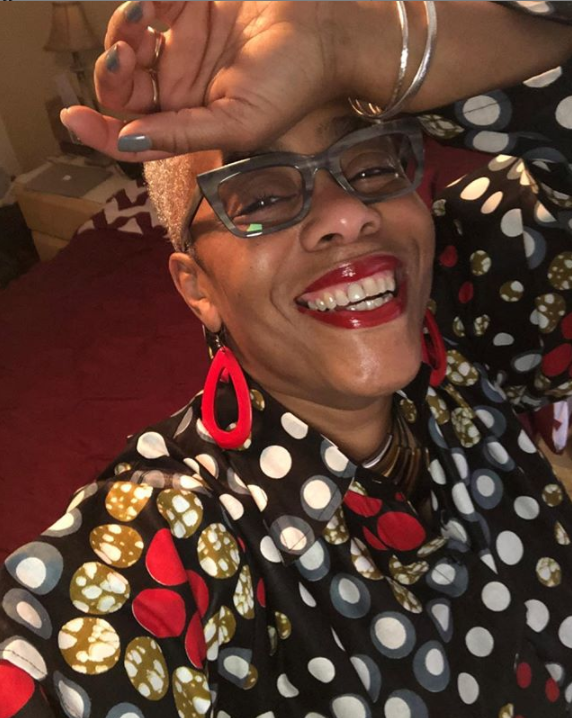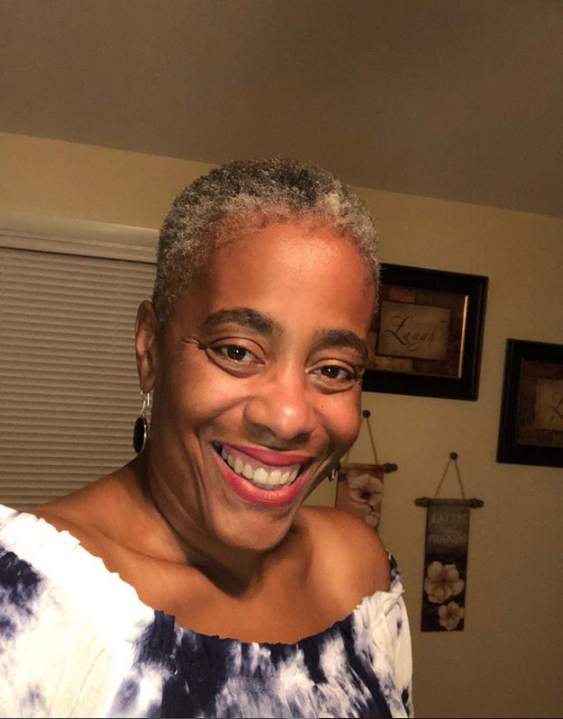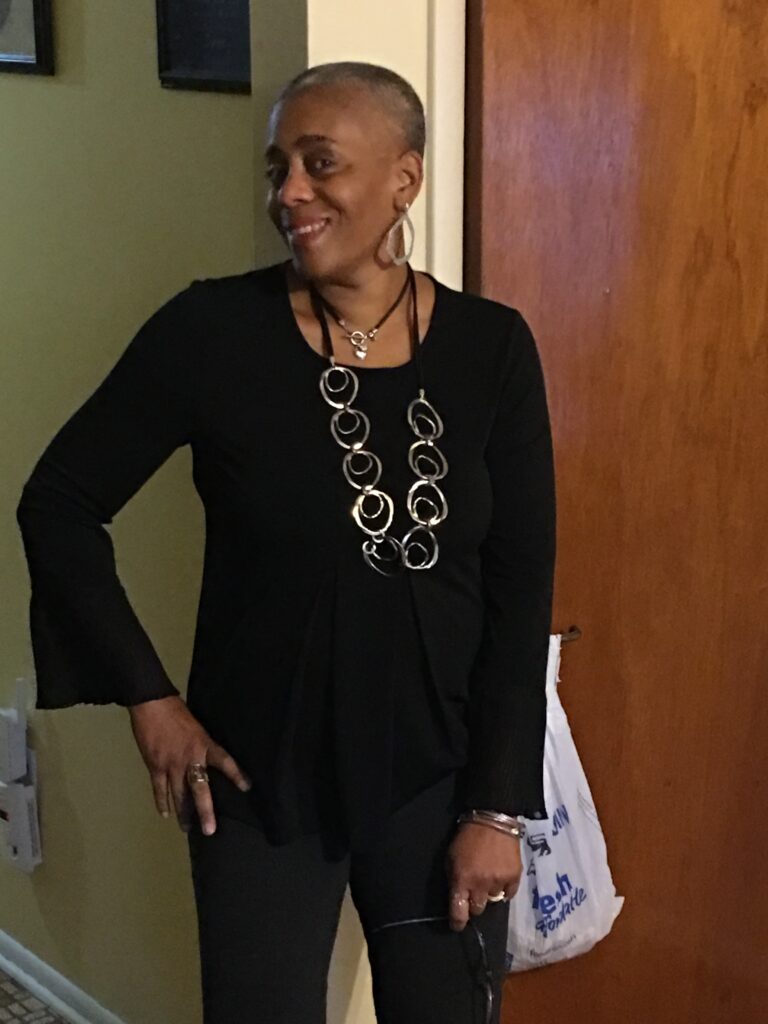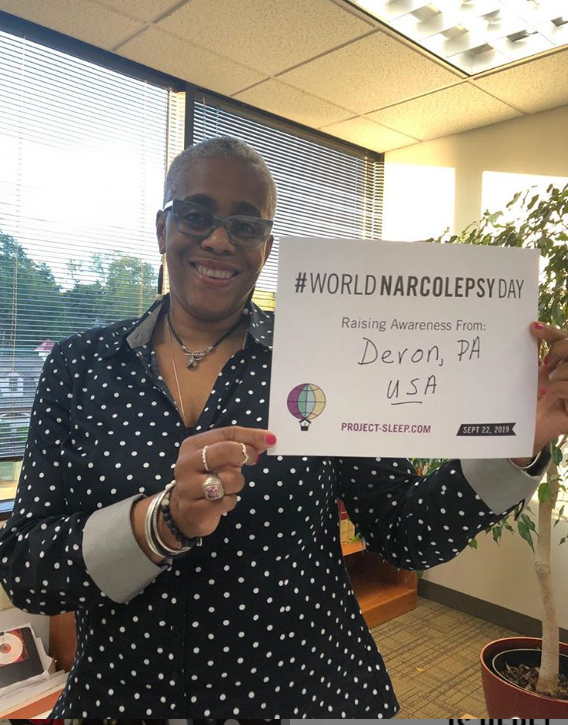Keeping Illness Invisible
“In 1979, fresh out of high school living in Atlanta, I was ready to start my life,” says Paula.
“Going to school full time, working part-time, and enjoying a full social life, I never felt there was anything wrong with sleeping every moment I could. It was even okay when my friends started teasing me for always falling asleep.”
As far back as college, Paula remembers sleeping a lot. “Back then I blew it off as being young, clubbing, and drinking too many Pink Champales.”
Paula worked part-time, did her school work, and didn’t think anything of spending her Tuesday nights enjoying Ladies night at Cisco’s on Campbellton Road, in Atlanta.
As they piled into the car, her friend Veronica would say, “Paula is going to fall asleep before her butt hits the seat.” Paula would be shaken awake as they pulled into the parking lot and go inside to dance the night away.
“I remember going into that club, being handed a drink at the door, and enjoying the evening for a while until I needed to sit again.” It’s only looking back that she realizes how tired she was on those late nights.
Paula doesn’t know how she made it through school because she fell asleep in class a lot. But she got her Associates Degree and went on to work in retail management. She was not aware that her frequent episodes of sleepiness were an indicator of a sleep disorder.
__________________________________________________________________
First Indications
Paula switched careers after her first son was born. Having an infant was an excellent excuse for her constant fatigue. While working as a paralegal at a law firm, she was starting to realize that she was more than tired.
“I was wearing a power suit and heels, it was the early 1990’s and I walked into the wall of a fish bowl office,” she said. When she walked into that wall, she decided this was a problem that justified a visit to the doctor. Now she believes this was a microsleep. A microsleep is a temporary episode of sleep or drowsiness for a fraction of a second or up to 30 seconds, where an individual becomes unconscious or is unable to respond to a stimulus.
When she went to the doctor, they ordered a lot of tests, and then passed her on to a different specialist.
They discussed everything but sleep disorders. What the doctors saw was a single parent, working full time that had every reason to be exhausted. But she knew it was something more and kept pressing them for answers. Sleepiness while driving was starting to be a concern. Soon the string of doctor’s appointments and medical tests became another source of her fatigue as they tried one thing after another to recharge her energy.
Living with Undiagnosed Illness
There were a lot of frightening experiences over the years, but with no answers from her doctors, Paula thought if she just stopped focusing on it, and continued living her life, it would go away. Paula was raising three kids and didn’t have time to deal with a medical problem.
“I was that mother that showed up for all the basketball games, scout meetings, and never said no.” On the outside, no one knew how tired Paula was and how much effort it was to keep going. “There is no excuse to not take care of my family. Some days it takes all my energy to show up, and to show up not looking how I feel.” Her mother taught her, “If you feel bad, it doesn’t mean you have to look bad.”

Finally, a Diagnosis that Fit
It took 21 years to get a proper diagnosis. It was her cardiologist that finally recommended a sleep doctor. After two overnight sleep studies and a third with an MSLT, Paula got a diagnosis of narcolepsy with cataplexy. “That was hard at first because I was in denial.” After the first year of struggling with the side effects of her narcolepsy medication, Paula stopped taking her medication altogether, thinking she could do ok without it. It didn’t take her long to realize that living with Narcolepsy was much more serious than she thought.
Narcolepsy is a chronic neurological condition that impairs the brain’s ability to regulate the sleep-wake cycle. It affects 1 in 2,000 people, 200,000 Americans and 3 million people worldwide. The hallmark symptom is excessive daytime sleepiness, which are periods of extreme sleepiness that feel comparable to how someone without narcolepsy would feel after staying awake for 48-72 hours.
Paula’s diagnosis includes cataplexy, which is striking, sudden episodes of muscle weakness usually triggered by strong emotions such as laughter, exhilaration, surprise, or anger. The severity varies from person to person, and Paula’s most frequent trigger is laughter.
When asked about cataplexy, Paula said, “I thought I was inflicted with some kind of muscular disease like MS … I didn’t know it was associated with any emotions of mine. It wasn’t until the diagnosis that I was able to make the connection. The full diagnosis explained everything it was that ah-ha type of moment. Then I was able to put the pieces together. ”
But knowing the pieces of the puzzle hasn’t made it easy to cope. The different facets of living with narcolepsy all impact her daily life. “I can’t break them apart from each other because they are all connected and intertwined. But the impact they have on a lot of different parts of my life is a 10. The impact is a 10.”
Another Invisible Symptom
Even with a diagnosis, unexpected symptoms continue to influence Paula’s life. Since narcolepsy affects the sleep-wake cycle, there are times when the barrier between them seems to break down. Her dreams mimic her waking life and feel like reality. These dreams create a space in her life where she has to question everything. They are so realistic, during the daytime they blend in with her other memories, often making her not trust herself.
For example, she remembers a conversation where she was supposed to take a dress back to Target for her friend. When she went to get the dress, her friend had no idea what she was talking about. This type of situation began to be an everyday occurrence.
She always has to second guess if her memories are real or if she dreamed them. It’s an endless struggle to know what to say or how to ask the right questions to discern her reality. For example, Paula often checks her phone to see who she has called in an attempt to confirm her memory of a conversation. But to anyone looking at Paula from the outside, she appears to be a perfectly put together adult woman with the husband, the kids, and the career. No one can see that she is living with narcolepsy.

Sleep Paralysis
“Kevin, can you help me? I can’t move! Kevin!” Paula could feel herself screaming this at her husband who was lying next to her in bed, but he insists she didn’t make a sound. Just before falling asleep, she often experiences sleep paralysis. This means her body is completely immobile, the way it is during REM sleep so we don’t act out our dreams, but her mind is still awake; so she feels trapped in her body. This symptom showed up after Paula had her diagnosis, but she wasn’t informed that it could be a part of her neurological disorder.
In addition to the sleep paralysis, Paula began having smokey dreams, where she sees life-like smokey figures. These smokey figures can be extremely creepy, sometimes they just watch her, but they make her feel weird. She disclosed, “I don’t tell anybody this but, one has even lain down in bed with me like a human.” These experiences are similar to the vivid dreams described before, but in these occurrences, she is still awake. She is experiencing hypnogogic hallucinations.
Hypnogogic hallucinations are visual, auditory, or tactile hallucinations upon falling asleep or waking up. These can be extremely confusing and frightening. Because of low awareness about this disorder and its unusual symptoms, there are many misconceptions about narcolepsy.
Working While Living with Narcolepsy
Paula has held down the same job for 30 years. To a lot of people, it looks like she couldn’t possibly have a chronic neurological disorder if her life looks so put together. She says that narcolepsy affects her work because she lives in a state of self-doubt.

Contrary to popular belief, people living with narcolepsy do not sleep all the time. Timing of sleepiness is “off” so while fighting sleepiness during the day, Paula can still struggle to sleep at night. The vivid dreams, sleep paralysis, and hypnogogic hallucinations all contribute to her lack of sleep. Her memory is compromised by sleep deprivation, and as the years go by, it gets harder to multitask. “Narcolepsy plays games with my brainpower,” she says.
More recently, she has managed to get some accommodations at work. Without her requesting it, a supervisor had the glass on her door frosted so she can take a nap when she needs it. But its difficult for her to decide to do so knowing that everyone in the office will know she is napping. The stigma of sleepiness being a weakness still permeates the workforce.
_______________________________
Friendship with Narcolepsy
Paula finds maintaining friendships while living with narcolepsy challenging because it requires energy that she does not have. But she still brings a lot to the table for her friends. She has always been ready to do whatever it takes to help a friend out and to be a good friend. But keeping her commitments is not always possible. Her friends understand when she needs to cancel at the last minute. “I feel it is important to have friends that accept and understand my limitations,” Paula says.

Narcolepsy limits how Paula experiences joy. She says she can come across as being cold because feeling the range of emotions that come with a good friendship triggers cataplexy. She doesn’t want to explain this to new friends, so she concentrates on the friends she has and gives them her all. “My biggest cataplexy trigger is laughing too hard. I am desensitized to the point where I won’t see the humor in something just because I don’t want to laugh about it.” She doesn’t like the way cataplexy makes her feel, so she chooses not to give in to those feelings.
Living With Narcolepsy
Paula takes a daily stimulant to manage her sleepiness, but there is no cure for narcolepsy. “I often wonder what my life would be like if I didn’t have it. Your narcolepsy will strip you if you let it, and I think I’ve let it. I could be doing greater things for myself.”
Paula is sharing her story because she wants to help bring awareness to this invisible illness. She wants other people living with narcolepsy to know that they are not alone and shed light on what so often is hidden beneath the surface.
For World Narcolepsy Day, Paula asks that you share her story to help her raise awareness. If you would like to contact Paula, she can be reached at @paulab1005 on Instagram.
This story was written by Paula and Kayla
Hi Paula! Thank you so so much for sharing your story, it is incredibly powerful! I feel like your progression and manner of dealing with everything reminds me so much of my story. You seem like such a strong woman and are definitely an inspiration! I write a blog and really love story writing especially about peoples experiences with narcolepsy. Is there some way I could contact you to discuss maybe writing your story if you’re interested? Thank you again. Wish you all the best!!! Iris
Hi Iris! Thanks for reading! You can find Paula on IG! I will also let her know who you are!
Hello Iris:
Thank you for reading the story and for sharing your thoughts. I would love to connect regarding your interest in writing a story as well. Everyday my head pulses with thoughts of how narcolepsy is affecting my life. Message me on Instagram at @paulab1005.
Paula